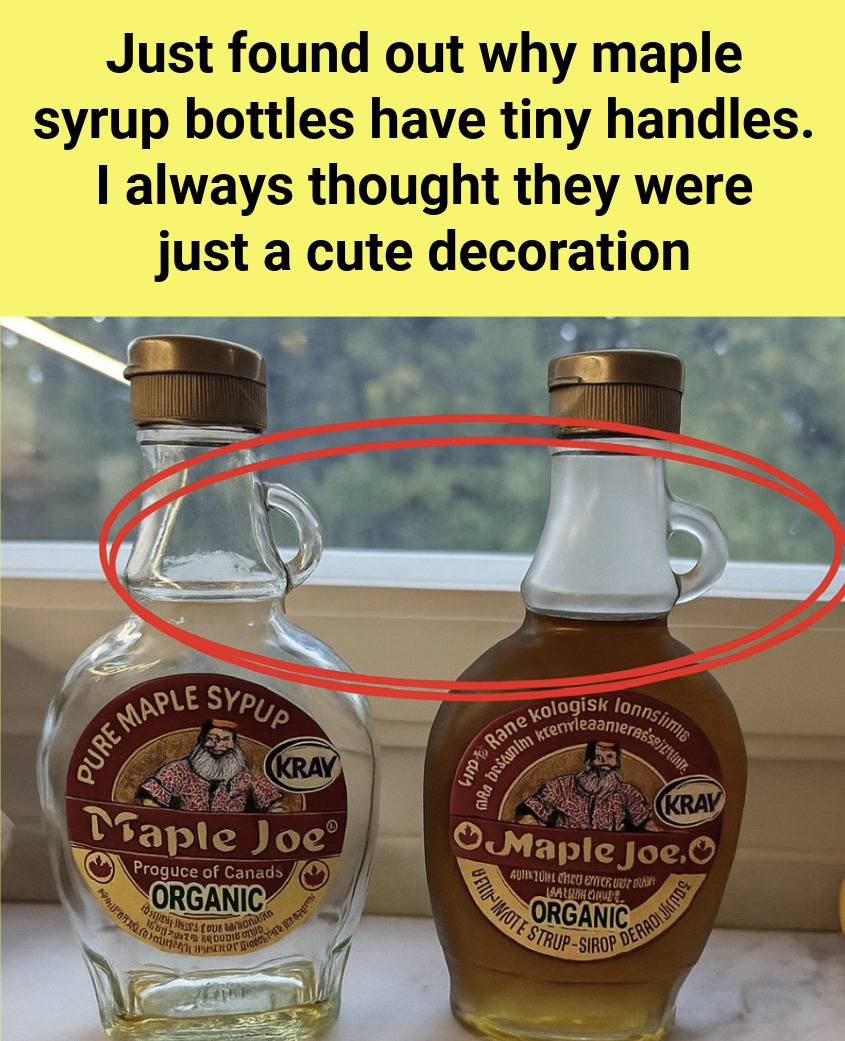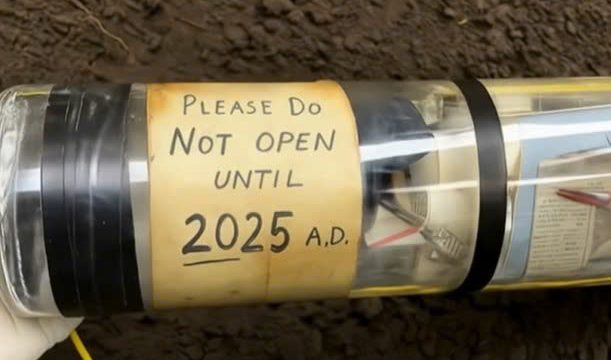One Saturday morning, which in our house is always waffle day, I was in the kitchen holding a bottle of maple syrup in one hand while answering one of my kids’ questions with the other. Mid-pour, my youngest suddenly asked, “Why does the bottle have that little handle if it doesn’t even do anything?” I paused for a second, realizing that although I had seen that tiny loop countless times, I had never thought about its purpose.

It’s far too small for an adult hand to actually hold—maybe a squirrel could use it—but for normal human fingers, it’s basically decorative. I gave a vague answer in the moment, but the question stuck with me. Later, after breakfast was over and the dog had somehow ended up with syrup in his fur, I decided to look it up. It turns out that the miniature handle isn’t just a random design choice—it has a history that goes back generations. In the past, syrup, molasses, and even liquor were often stored in large, heavy ceramic jugs with big loop handles.
Those handles were functional, allowing people to carry and pour without straining their wrists. Eventually, as production shifted to lighter glass bottles, manufacturers kept part of the jug’s design as a nod to tradition. The large, usable handle was scaled down into the small decorative loop we see today. That little handle is essentially a design tribute, a quiet reminder of the days when syrup came in hefty containers you had to grip with your whole hand. You might wonder why they didn’t just make the handle big enough to be useful. The answer lies in a design concept called a skeuomorph—when a feature from an older object is preserved in a newer version purely for the sake of appearance and familiarity, even though it no longer serves a practical function. It’s like decorative stitching on jeans or fake pockets on jackets; it completes the look even if it doesn’t work.
The tiny handle on a syrup bottle is there to keep the visual connection between past and present, reinforcing an image of authenticity and tradition. But beyond aesthetics, there’s a bit of clever marketing at play. The handle, though functionally useless for most adults, gives the bottle a rustic, homemade vibe. It subtly suggests that the syrup inside might have come from a small cabin in Vermont rather than a supermarket shelf. Even if you’ve never seen a real syrup jug from a hundred years ago, the shape triggers feelings of nostalgia and quality. It’s a psychological nudge that makes the product seem more special. And while it’s mostly decorative, the handle isn’t completely without purpose.
If the bottle gets sticky, the little loop can give you something to pinch for a slightly better grip while pouring—though it’s not exactly comfortable. Some people even use the handles to hang their bottles on wall hooks, which might make sense if you have a kitchen decorated in a certain style. For most of us, though, it’s just a quirky feature that adds a touch of charm. What’s fascinating is how this design element has persisted. We’re not pouring syrup from heavy ceramic jugs anymore, but the shape of those old containers has been carried into modern packaging because it “feels” right. It’s the same reason we still use the floppy disk icon to mean “save” on computers, even though most younger people have never actually used one.
The design has outlived its practical function because it has become part of the product’s identity. Now, when my kid asks why the handle is there, I can give a real answer. It’s not especially helpful in a practical sense, but it’s a reminder that design often sticks around for reasons beyond utility. Sometimes it’s about the comfort of tradition, the power of visual storytelling, and the subtle ways companies connect us to the past. In the case of the maple syrup bottle, that tiny handle is a sweet piece of history—both literally and figuratively—that continues to pour a little extra nostalgia onto our breakfast tables.





